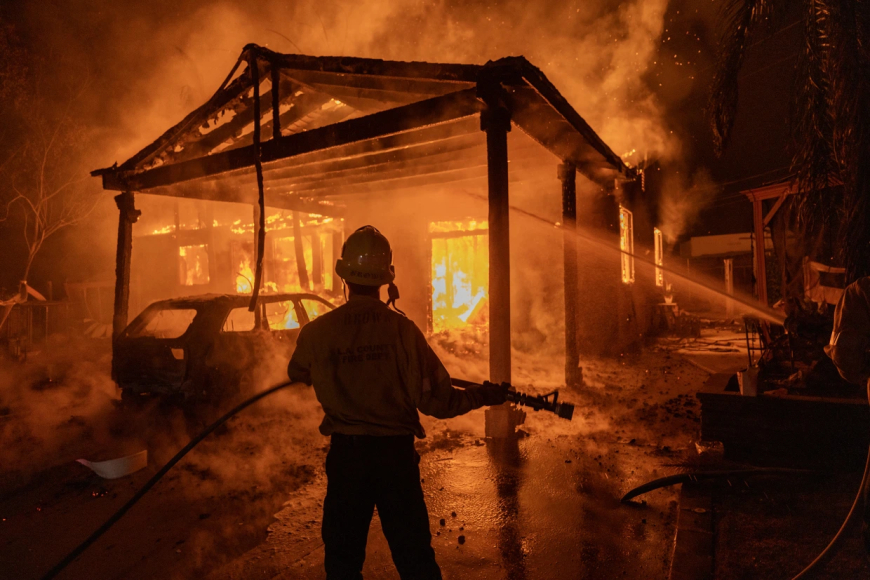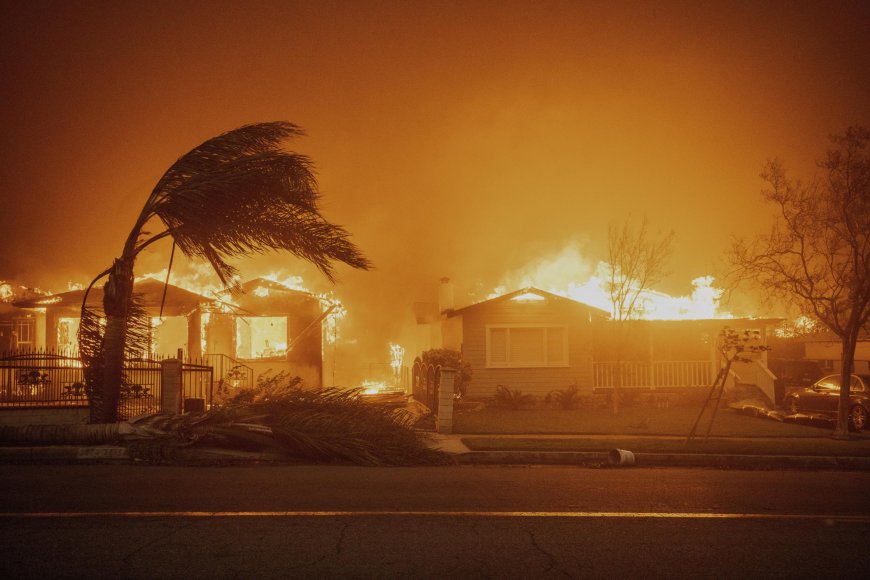Los Angeles California Wildfires Are Getting Worse : Death Toll Rises to 10 While 35,000 Acres Have Been Burned
Stay updated on the latest California wildfires affecting Los Angeles and beyond. Learn about the devastation, evacuation efforts, containment updates, and the impact of climate conditions on these record-breaking blazes

California is grappling with a series of devastating wildfires, particularly in the Los Angeles area. The most significant blazes, including the Palisades, Eaton, Hurst, and Woodley fires, have collectively scorched over 35,000 acres, leading to the destruction of more than 10,000 structures and resulting in at least ten fatalities.
Current Status of Major Fires:
The fires are estimated to have captured an area worth over 35,000 acres: Palisades (at least 19,978 acres), Eaton (at least 13,690 acres), Kenneth (at least 960 acres), Hurst (at least 771 acres) and Lidia (at least 348 acres). At least 10 people have reportedly died in wildfires in Los Angeles that began on Tuesday with the first ripping across the upscale Pacific Palisades area.
The two biggest wildfires (Palisades and Eaton) have together destroyed more 10,000 structures: over 5,300 and 5,000, respectively.
-
Palisades Fire: This fire has consumed over 20,000 acres in Pacific Palisades and Malibu, destroying thousands of homes and prompting widespread evacuations.
-
Eaton Fire: Burning near Pasadena, the Eaton Fire has devastated the region, contributing significantly to the overall destruction.
-
Hurst and Woodley Fires: These fires continue to threaten various communities, with containment efforts ongoing.
Impact and Response:
At least ten people have lost their lives due to the fires, with several others injured. Approximately 200,000 residents are under evacuation orders, with emergency shelters established to accommodate those displaced. The wildfires are projected to be the costliest in California's history, with insured losses potentially exceeding $20 billion and total economic losses estimated at $50 billion.
A state of emergency has been declared, and federal assistance is being mobilized to support firefighting efforts and aid affected communities.

Prolonged drought, high temperatures, and strong winds have created ideal conditions for wildfires to ignite and spread rapidly. The expansion of residential areas into wildfire-prone regions has increased the risk to human life and property.
Over 8,000 firefighting personnel are engaged in battling the blazes, utilizing ground crews, air support, and heavy machinery. Local organizations and volunteers are providing aid to evacuees, including food, shelter, and medical assistance. The current wildfires in California underscore the increasing challenges posed by climate change and urban development in fire-prone areas. Efforts continue to contain the fires, support affected communities, and develop strategies to mitigate future wildfire risks.



 Utej
Utej 





